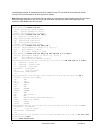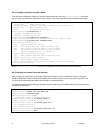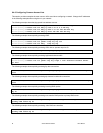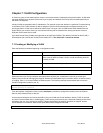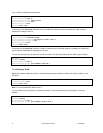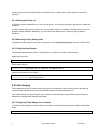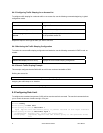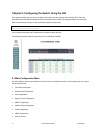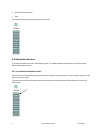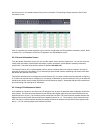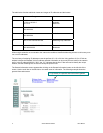
Chapter 8: Quality of Service Configuration
Quality of Service (QoS) is a general term referring to various methods of traffic management you can employ on
your network to ensure that traffic you identify as high-priority can use a sufficient share of the available bandwidth.
The IC36240 supports the following QoS methods:
• Weighted Fair Queuing
• Priority Queuing
• Traffic-Shape
• Rate-Limit
8.1.1 Configuring Weighted Fair Queuing
For flow-based WFQ, packets are classified by flow. Packets with the same source IP address, destination IP
address, source TCP or UDP port, destination TCP or UDP port, and protocol belong to the same flow. The
bandwidth allocation is determined by the precedence field in the IP header. To enable this feature, use the fair-
queue command in interface configuration mode:
When you enable flow-based WFQ, the following table applies:
CoS Bandwidth
0 1/64
1 3/64
2 5/64
3 7/64
4 9/64
5 11/64
6 13/64
7 15/64
8.1.2 Monitoring Weighted Fair Queuing Lists
To display information about the input and output queues, use the following command in EXEC mode:
Command Purpose
show queuing fair
Displays the status of the weighted fair queuing.
8.2 Priority Queuing
Priority Queuing (PQ) allows you to define how traffic is prioritized in the switch. You configure four traffic priorities.
You can define a series of filters based on packet characteristics to cause the router to place traffic into these four
70 Asante IntraCore IC36240 User’s Manual



